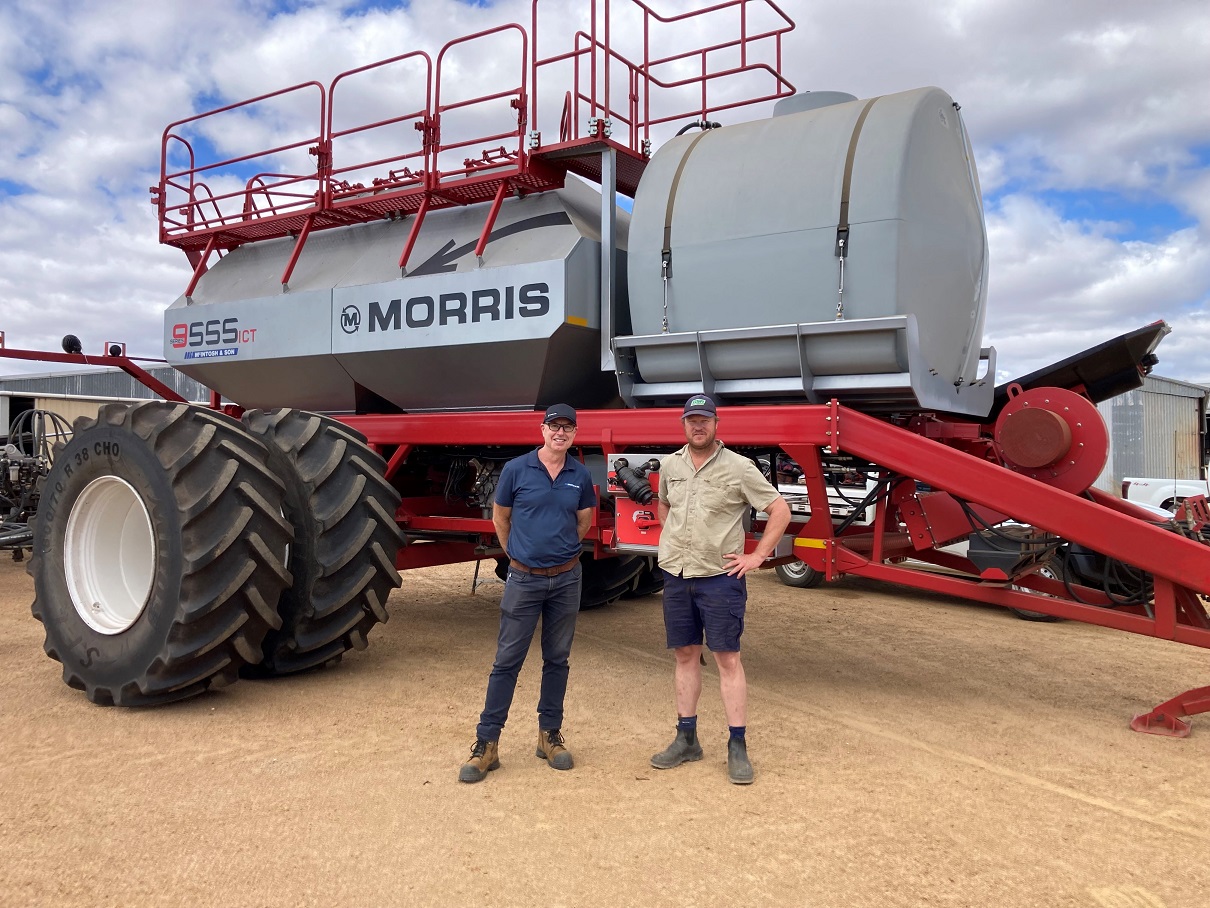Section control to help save on fertilisers

Gairdner grower Gary Walter, pictured with Mark Tierney, McIntosh & Son Albany, and the family’s Morris 9555 tow-between air cart with input control technology (ICT). Gary says he is glad to have the section control technology to help limit rising fertiliser prices this season.
Gary and Karina Walter
Gairdner, WA
Continuous cropping program of wheat, barley and canola. Soils on the family property range from heavy river and granite soils through to sandy gravels.
Are you appreciating the fact you have ICT on your Morris 9555 air cart considering the rise in fertiliser prices for this season?
“Cost increases with granular and liquid fertilisers are close to double. They are right up there, so I would certainly rather have it (section control) than not. The technology largely paid for itself last year and will more than cover its investment in the coming year.’’
What prompted you to look at section control technology for seeding?
“At the end of our first season here, we sat down, did some calculations on hectares and seeded hectares and realised we needed to address overlap. Here, we have rivers, bushes, granite and other obstacles. In the first year we had 4400ha and we seeded up to 5200ha. We compared it with our sprayed hectares and worked out the overlap was about 13 per cent and thought we could drop it down to within 3-4pc of what the sprayer was achieving, which has 72 sections. We put $90/ha on the seed and fertiliser and by reducing the overlap by 650-700ha, it amounted to a saving of around $60,000. It covered the payment on the new gear and we picked up increased capacity with the new system.’’
How did you arrive at choosing the Morris 9555 air cart with ICT?
“The Morris section control has been around a few more years and is tried and proven a bit better, without the issues. The numbers came out close to what we were thinking. Where paddocks were 10-12ha (with the seeding) above the sprayer, they are now down to within 1-3ha of the sprayer. We have added the lease blocks, so it’s a little difficult to calculate, but we would be saving 8-9pc. We were generous with the overlap – we don’t want any gaps – but we were happy with the savings and can have confidence in it. We were stressing about it big time, like with canola where you don’t know whether you have seeded or not, but there were no gaps. And we were inexperienced. It was new to us, so we had to think about it more to maximise the savings. When we are doing our third headlands, we shut the ICT off to get the overlap.’’
How would you describe the calibration process now, including using the App?
“You don’t have to go back to the cab. It’s very accurate compared with what we are used to.’’
Double pivot geometry is linked to the Topcon X35 controller with the Morris air cart in tow between configuration. This recognises the two drawbar pins on the front and rear of the cart and correctly tracks the seeding bar around corners. How was your experience with this?
“It worked really well and we were really happy with the Topcon screen. The geometry makes a big difference. It took a while to get it working, but it’s important for accuracy. It better recognises where the bar is, allowing more accurate section control.’’
Growers can contact their local McIntosh and Son dealership or head to mcintoshandson.com.au to discover how Morris can products can work for you.

